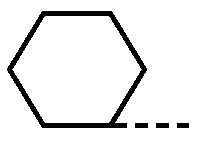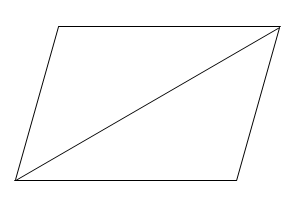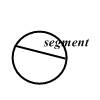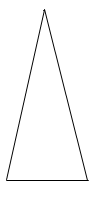What are Polygons?
Polygons are two-dimensional shapes that are made up of straight lines.
Polygons cannot have any curved sides.
Regular polygons have sides that are all of the same length.
Types of Polygons
You should know the types of special polygons for your geometry test.
A pentagon is a polygon that has five sides:

A hexagon is a polygon with six sides:

A heptagon is a polygon with seven sides:

An octagon is a polygon with eight sides:

A decagon is a polygon with ten sides:

All of the polygons in the illustrations above are regular polygons.
Each side in a regular polygon is the same length as the other sides.
Irregular polygons
In an irregular polygon, the sides are not equal in length.
Look at the sides of the polygon in the example below.

Complex polygons
In a complex polygon, the sides intersect with one another.
So, a complex polygon can look like two or more triangles that have been combined.

A complex polygon could also look like a combination of other polygons, like squares and triangles.

Concave polygons
Concave polygons have at least one angle that points towards the inside of the shape.

The internal angle of a concave polygon has to be more than 180°.
A straight line has 180°, so the concave part of the polygon has to point inwards.
Polygons and Interior Angles
You can work out the sum of the interior angles of a polygon by dividing the shape into triangles.
Draw all of your lines from the same corner (also called a vertex).
Look at how the lines are drawn in the polygon below:

You will remember from our previous post on triangles that the sum of all of the angles inside a triangle is 180°.
STEP 1: Determine the total measurement of the interior angles.
In our example above, we have made three triangles.
So, the sum of all of the degrees of the interior angles in our polygon is 540:
180° × 3 triangles = 540°
STEP 2: Determine the measurement of each interior angle.
If the polygon is regular, you can divide the total degrees by the number of angles to determine the degree measurement of each angle.
We have a regular pentagon (with 5 angles) in our example above, so divide total degrees by 5 to get the measurement of each angle.
540° ÷ 5 = 108° for each interior angle
Special Polygons – Interior Angle Meaurement
Equilateral triangle
180° ÷ 3 angles = 90° for each interior angle
Square, rectangle, or regular quadrilateral
A square, rectangle, or other regular quadrilateral can be divided into two triangles.
This can be done by drawing a line from one corner to the opposite corner.
180° × 2 triangles = 360°
So, each angle in a square, rectangle, or regular quadrilateral has 90°.
360° ÷ 4 angles = 90° for each interior angle
Regular pentagon
A regular pentagon can be divided into three triangles.
This can be done by drawing two lines from one corner to the opposite corners.
So, the total of all of the degrees of the angles in a polygon is 540.
180° × 3 = 540°
So, each angle in a regular pentagon has 108°.
540° ÷ 5 angles = 108° for each interior angle
Regular hexagon
A regular hexagon can be divided into four triangles.
This can be done by drawing three lines from one corner to the opposite corners.
So, the total of all of the degrees of the angles in a polygon is 720.
180° × 4 = 720°
So, each angle in a regular hexagon has 120°.
720° ÷ 6 angles = 120° for each interior angle
Interior Angles in Other Polygons
To determine the size of any interior angle of a regular polygon, follow these steps:
- Divide the polygon into triangles drawing lines from one corner to the opposite corners.
- Count how may triangles you have made.
- Multiply the number of triangles by 180 to get the total degrees for all interior angles.
- Divide the total degrees by the number of angles to determine the measurement of each interior angle.
Polygons and Exterior Angles
To determine the size of any exterior angle in a polygon, draw a straight line from the corner.

Here we have a regular hexagon, so each interior angle has 120°.
A straight line has 180°, so we subtract to find the measurement of the exterior angle.
180° – 120° = 60°
So, the exterior angle in the hexagon above is 60°.
Further Geometry Practice
You may also want to view the following posts:
Triangles
Circles
Squares and Rectangles





























